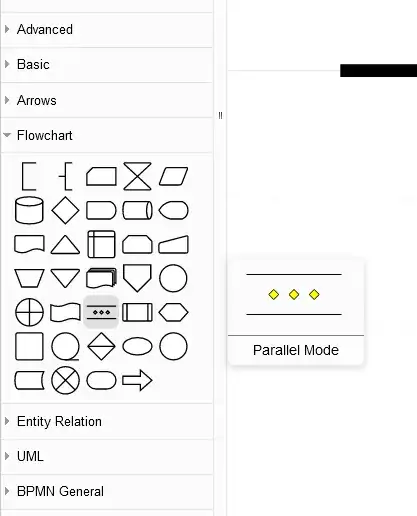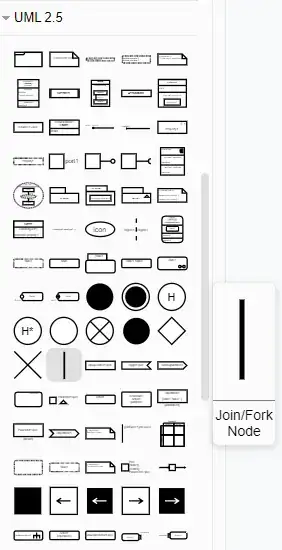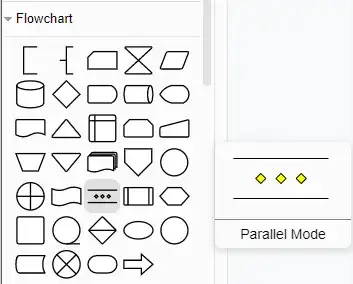Our drawing tool is draw.io. Occassionally I've got to draw flow charts with it. In those flow charts I've got to express parallel processes (very similar to this UML example).
Wikipedia says about flow charts:
Parallel Mode is represented by two horizontal lines at the beginning or ending of simultaneous operations
So, I expected to find a shape that looks like those two horizontal lines.
However, this is what draw.io offers me:
I never have seen that shape with those 3 yellow diamonds in it before. Neither can I find it in any other flowchart shape documentation.
Is parallel mode = parallel process?
Is this the shape I wanna use for my use case?
Does it mean something different?
What are those diamonds for?
Do they represent nested routines?


